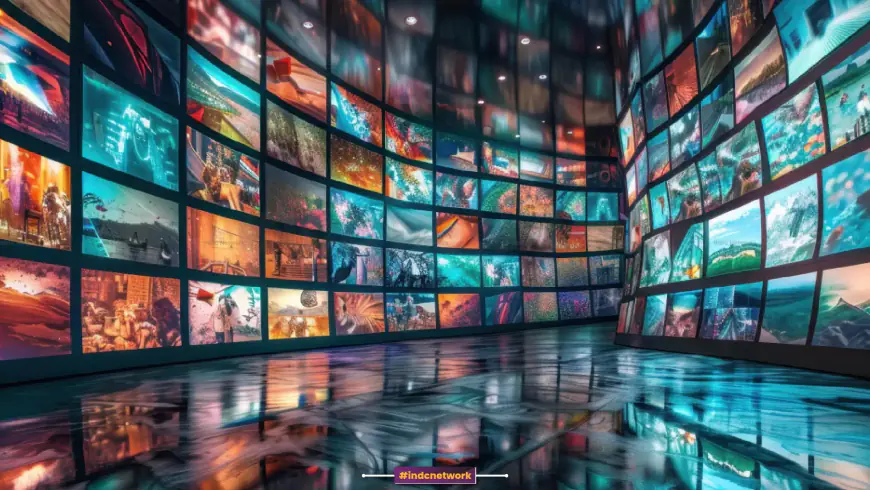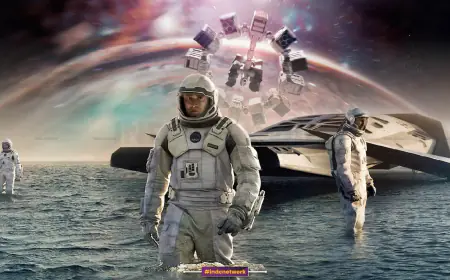How Media & Entertainment is Evolving: Trends Shaping the Future of Content and Consumption
The media and entertainment industry is undergoing significant transformation, driven by technology, changing consumer preferences, and evolving platforms. From the rise of streaming services to the growth of social media influencers, the industry is adapting to new models of content creation and distribution. This article explores the key trends, challenges, and opportunities shaping the media and entertainment landscape today.

INDC Network : Biography :Introduction: The Dynamic World of Media and Entertainment
The media and entertainment industry has always been a dynamic and evolving space, but in recent years, it has undergone an unprecedented transformation. The growth of digital platforms, the rise of streaming services, and the shift towards on-demand content have redefined how we consume entertainment. Traditional forms of media, such as television and print, are no longer the dominant players. Instead, online streaming, social media, and interactive content are at the forefront of the industry’s evolution.
In this article, we will explore the major trends, challenges, and opportunities currently shaping the media and entertainment industry. From the emergence of new content formats to the increasing reliance on data analytics and personalization, the way we engage with entertainment is constantly shifting.
The Impact of Technology on Media & Entertainment
Technology has been the driving force behind many of the recent changes in the media and entertainment sector. Advances in streaming technology, cloud computing, artificial intelligence, and virtual reality have opened up new opportunities for content creators, distributors, and consumers. Some of the key technological innovations that are reshaping the media landscape include:
-
Streaming Services:
The shift from traditional television to online streaming platforms like Netflix, Amazon Prime Video, Disney+, and Hulu has drastically changed how consumers access movies, TV shows, and documentaries. These platforms offer viewers the freedom to watch content at their convenience, without the limitations of traditional broadcast schedules. This has also led to the decline of cable TV subscriptions, with many consumers opting for more flexible streaming plans. -
Social Media and User-Generated Content:
Social media platforms such as YouTube, TikTok, and Instagram have transformed how entertainment is consumed. These platforms allow content creators and influencers to connect directly with their audiences, bypassing traditional media channels. The rise of user-generated content (UGC) has democratized the entertainment industry, giving individuals the power to create, share, and monetize their own content. -
Virtual Reality (VR) and Augmented Reality (AR):
Virtual and augmented reality technologies are beginning to have a significant impact on the entertainment industry. VR and AR are being used in gaming, live events, and even movies to create immersive experiences that transport users into entirely new worlds. For example, VR gaming allows players to interact with virtual environments, while AR apps like Pokemon Go blend the digital and real worlds in fun and engaging ways. -
Artificial Intelligence (AI) and Machine Learning:
AI is playing an increasingly important role in the media and entertainment industry. AI algorithms are used in content recommendation systems, such as those found on Netflix and YouTube, to suggest content based on viewers’ preferences. Additionally, AI is being utilized in content creation, with tools that can automatically generate music, video, and even written articles.
Trends Shaping the Future of Media & Entertainment
The media and entertainment industry is evolving rapidly, and several key trends are likely to define its future. These trends reflect the changing habits of consumers, the impact of technology, and the ways in which entertainment is being consumed and produced.
-
On-Demand Content:
The demand for on-demand content continues to grow, with consumers increasingly favoring the ability to watch or listen to content whenever they choose. This trend has fueled the success of streaming platforms, podcasting, and audiobooks. Consumers are no longer bound by schedules, and the popularity of binge-watching has contributed to the rise of platforms like Netflix, which releases entire seasons of TV shows at once. -
Subscription Models and Paywalls:
The shift towards subscription-based models has become more prevalent across the media and entertainment landscape. Instead of relying on traditional advertising revenue, many content providers are adopting subscription-based models (e.g., Spotify, Netflix, Patreon). This offers consumers access to exclusive content while giving creators a more stable and predictable source of income. Additionally, paywalls are becoming more common for news outlets, offering premium content for subscribers. -
Interactive and Immersive Content:
The rise of interactive content, such as choose-your-own-adventure films and shows, is another trend gaining traction. Streaming platforms like Netflix have already experimented with interactive TV shows like Bandersnatch, where viewers can make decisions that affect the plot. Similarly, immersive experiences created through VR and AR are gaining popularity, offering consumers new ways to engage with entertainment. -
Personalization and Data Analytics:
As consumer expectations evolve, personalization is becoming a central theme in the media and entertainment industry. Platforms like Netflix and Spotify use data analytics to tailor content recommendations based on individual preferences and viewing habits. The more data these platforms collect, the better they can predict what content users will enjoy, leading to more personalized and engaging experiences. -
Diversity and Inclusion:
In recent years, the entertainment industry has seen increased emphasis on diversity and inclusion. From behind-the-scenes roles to on-screen representation, media companies are increasingly acknowledging the importance of diverse voices and stories. This trend is reflected in the rise of content that celebrates a wide range of cultures, identities, and experiences, helping to foster a more inclusive environment in the entertainment industry.
Challenges in the Media & Entertainment Industry
Despite the numerous opportunities and innovations, the media and entertainment industry also faces several challenges that must be addressed for continued growth and success:
-
Piracy and Copyright Issues:
Piracy remains a major challenge for the media and entertainment industry. The illegal distribution of movies, TV shows, and music undermines the revenue model for creators and distributors. Although streaming platforms have made content more accessible, piracy continues to thrive, especially in regions with limited access to paid services. -
Competition for Consumer Attention:
With the rise of so many content options and platforms, competition for consumer attention has become fiercer than ever. Content creators must not only produce high-quality content but also develop innovative marketing strategies to stand out in a crowded marketplace. -
Monetization and Revenue Models:
As traditional media revenue models (such as advertising) continue to evolve, companies must find new ways to monetize content. Subscription models, pay-per-view, and partnerships with brands are some of the approaches being explored, but determining the best path to profitability remains an ongoing challenge. -
Regulatory Issues:
The digital nature of many new media platforms has raised questions about regulation, particularly around data privacy, content moderation, and intellectual property. Governments around the world are grappling with how to regulate platforms like YouTube, Facebook, and Instagram while maintaining a balance between innovation and consumer protection.
The Future of Media & Entertainment
Looking ahead, the future of media and entertainment is bound to be shaped by emerging technologies and changing consumer preferences. With advances in AI, VR/AR, and personalized content, the industry will continue to innovate, offering consumers even more immersive, engaging, and customizable experiences. As the digital media ecosystem evolves, traditional formats will likely coexist with new, innovative models, creating a dynamic and exciting future for both creators and consumers.
As consumers continue to seek more flexible, on-demand content, platforms that embrace personalization, diversity, and technology will likely thrive. The entertainment industry is on the cusp of a new era, and those who can adapt to these changing dynamics will lead the charge toward the future of media.
What's Your Reaction?






































































































































































